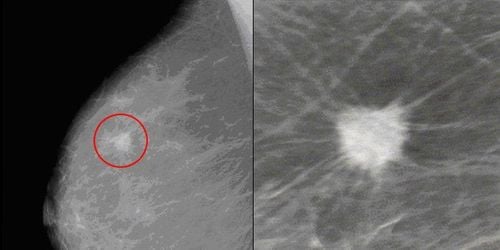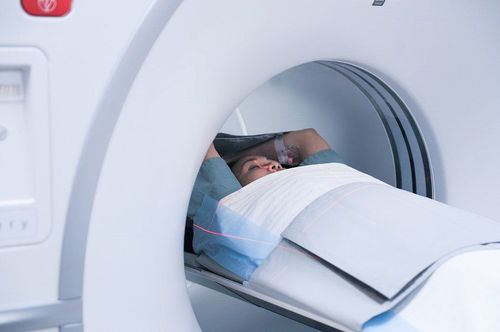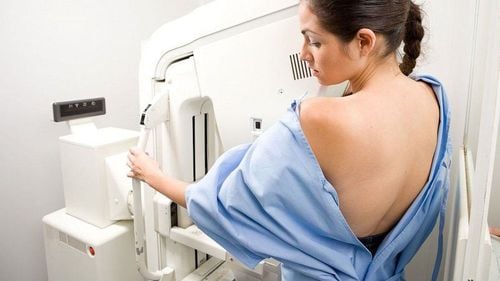This is an automatically translated article.
Mammography will help doctors detect small tumors at an early stage. From there, there will be more treatment options and a higher chance of completely curing the disease.
1. What is a mammogram?
Mammography means an X-ray of the breast for the screening, detection and diagnosis of breast cancer. With this technique, doctors will have to take many X-ray images in each breast of the patient.
In case the patient has a lump or any symptoms of breast cancer that are detected through physical examination, the doctor will order a mammogram to confirm the diagnosis.
Usually, a diagnostic mammogram is more complicated than a mammogram to screen for breast cancer. To diagnose breast cancer, your doctor needs to take more x-rays to get detailed pictures of your breasts from different angles. Mammogram doctors can also zoom in on some areas of concern to get the most accurate diagnosis.
2. Risks and benefits of mammography
There are certain risks and benefits to having a mammogram. Here are some benefits and risks of this procedure:
Benefits of mammography Mammograms help doctors detect small tumors at an early stage. From there, there will be more treatment options and the ability to treat the disease completely.
Risks of mammography Regarding the risk of mammograms, the amount of radiation a patient receives in one mammogram is equivalent to the average radiation dose a person receives from the environment within a few days. 3 months.
Besides, X-rays are very harmful to the fetus, so women who are pregnant or suspected of being pregnant need to inform their doctor or imaging technician to change to another diagnostic method.
Another risk of mammography is giving a false positive result. Therefore, additional tests such as breast ultrasound are required.
3. How long does it take for mammogram results?
On average, each mammogram takes about 30 minutes. Once this is done, you will have to wait until your doctor examines the images to determine if further tests are needed.
You will receive the diagnostic results within 1 hour of the scan or within 2 days depending on the clinical and diagnostic requirements.
4. How is mammography done?
Mammography techniques should be performed by a highly trained physician. The procedure is as follows:
Step 1: At the imaging room, the patient will be asked to change into a gown and stand at the X-ray machine. Step 2: The doctor will place the patient's breast in the scanner, on a special plane and pressed with a compression plate. The machine will then squeeze and squeeze your breast, you will feel some discomfort. That's why mammograms are recommended when your breasts are least engorged. Breast compression is necessary because all tissues can be seen, hold the breast in place to prevent blurring caused by movement, and also reduce X-ray diffusion for clearer images. . Step 3: The doctor stands behind a glass screen during the X-ray. You will be asked by the doctor to change position between the scans. Step 4: This procedure is repeated to capture the other breast.

Chụp nhũ ảnh giúp sàng lọc, phát hiện cũng như chẩn đoán ung thư vú
5. Notes before mammography
For the fastest and most accurate mammogram results, there are a few basic things you should keep in mind:
Don't have a mammogram in the week before your period, because your breasts will often become more tense during this time. Therefore, the best time to have a mammogram is the last day of your period until 2 weeks after the first day of your period. If you are pregnant or suspect that you may be pregnant, you must inform your doctor to change to another method of diagnosis. Wear loose fitting clothes, shirt and pants do not stick together. Also, don't use deodorant, perfume, or oils in your armpits and breasts. Shrink all previous mammograms so your doctor can compare them with current results. In summary, because the risk of breast cancer increases with age, mammography is an essential imaging technique in the routine physical examination of all women over 50 years of age in general, who have pre-existing medical conditions. Family history of breast cancer in particular in order to detect breast cancer early.
Currently, in order to join hands in "Say no to breast cancer", Vinmec International General Hospital has built a breast cancer screening package including: Breast examination with an oncologist or a gynecologist; Mammogram (2 sides); 2D breast ultrasound on both sides.,..
Advantages of breast cancer screening at Vinmec:
Team of highly qualified and experienced doctors. Comprehensive professional cooperation with domestic and international hospitals: Singapore, Japan, USA, etc. Comprehensive treatment and care for patients, multi-specialty coordination towards individualizing each patient. Having a full range of specialized facilities to diagnose the disease and stage it before treatment: Endoscopy, CT scan, PET-CT scan, MRI, histopathological diagnosis, gene-cell testing, .. There are full range of main cancer treatment methods: Surgery, radiation therapy, chemotherapy, stem cell transplant... Breast cancer screening package at Vinmec for the following subjects:
Female customers, over 40 years old. Customers wishing to be able to screen for breast cancer Customers are at high risk of cancer – especially customers with a family history of breast cancer. Women of reproductive age, perimenopause and menopause. Women who are having symptoms of breast cancer such as: pain in the breast, lump in the breast, etc
Please dial HOTLINE for more information or register for an appointment HERE. Download MyVinmec app to make appointments faster and to manage your bookings easily.













